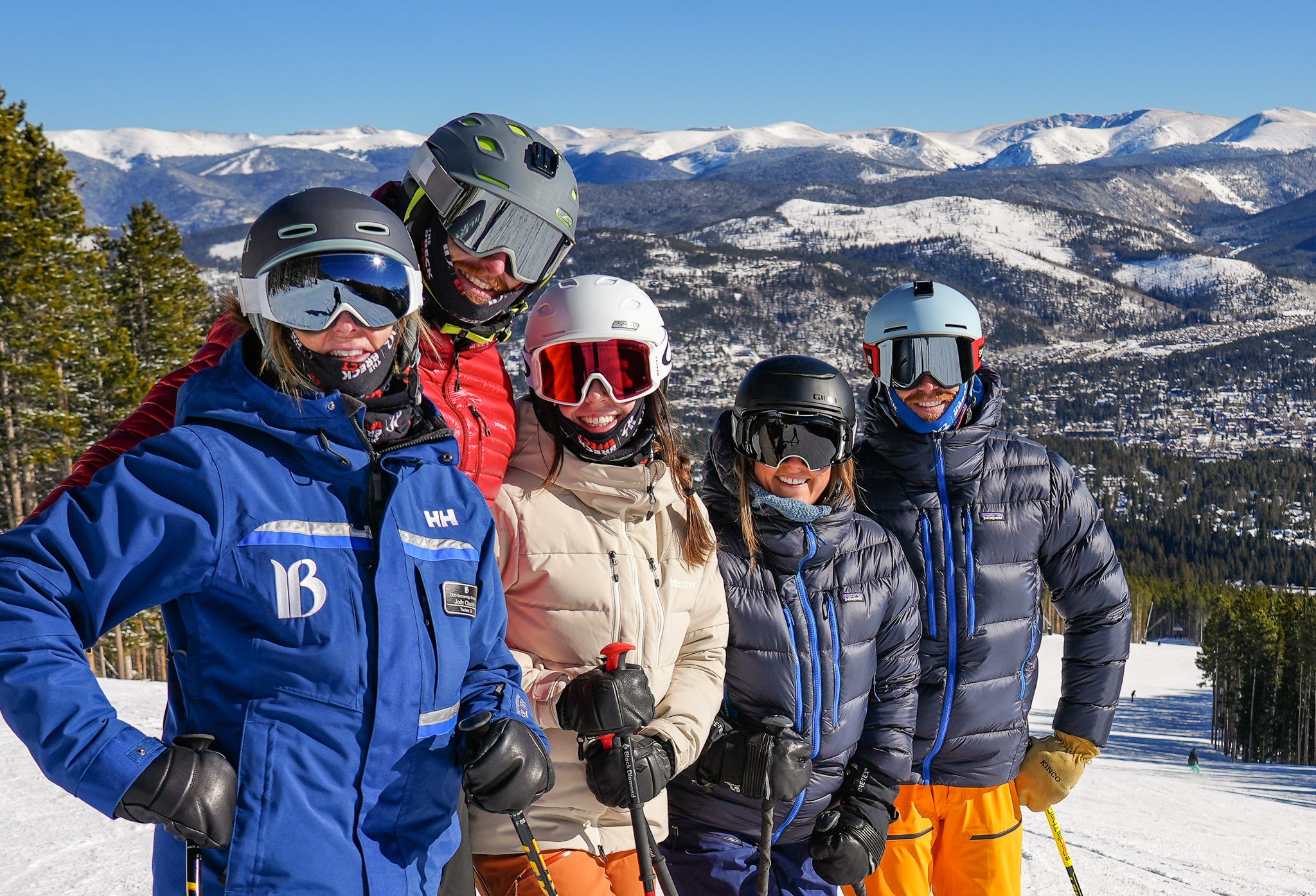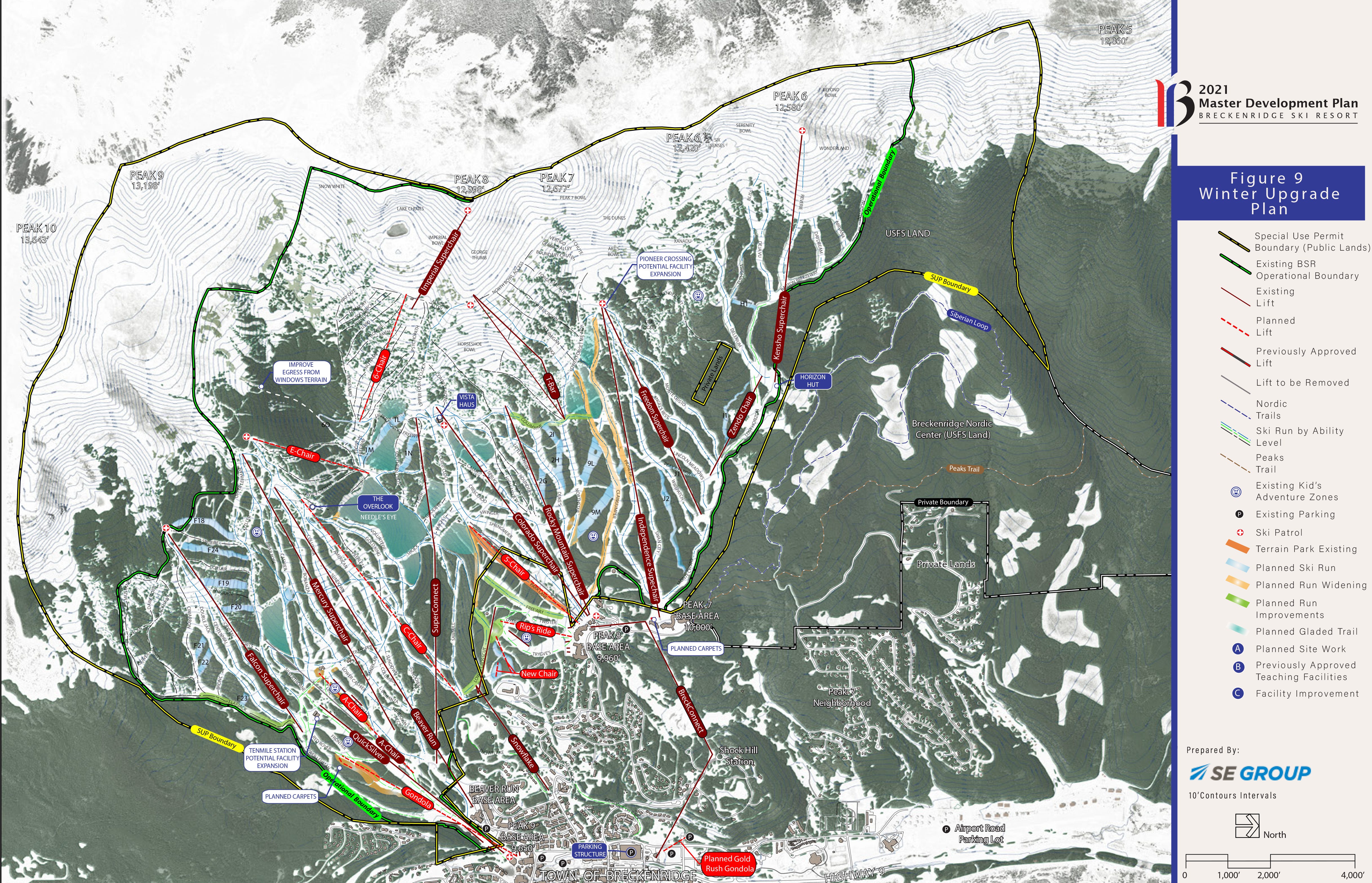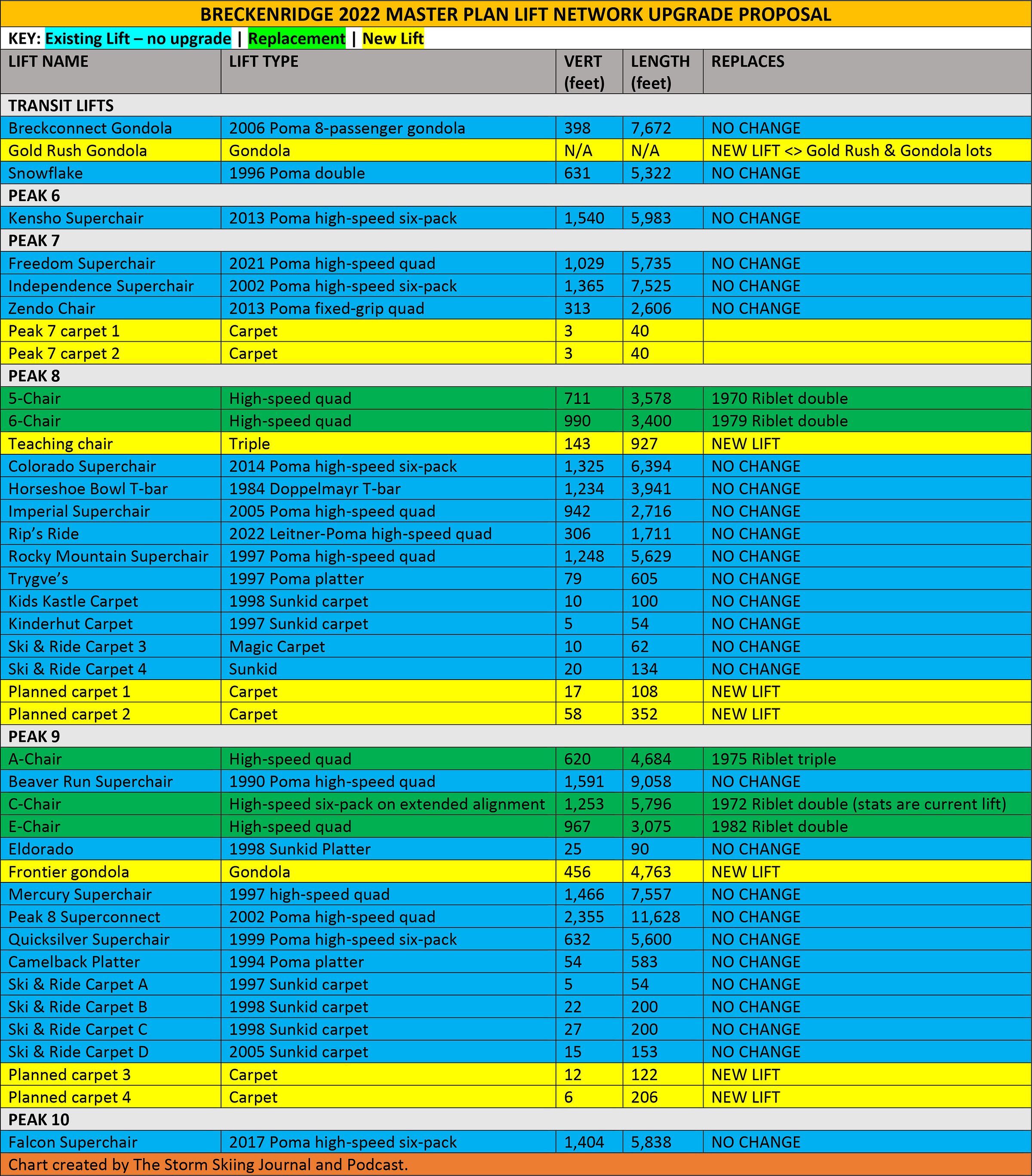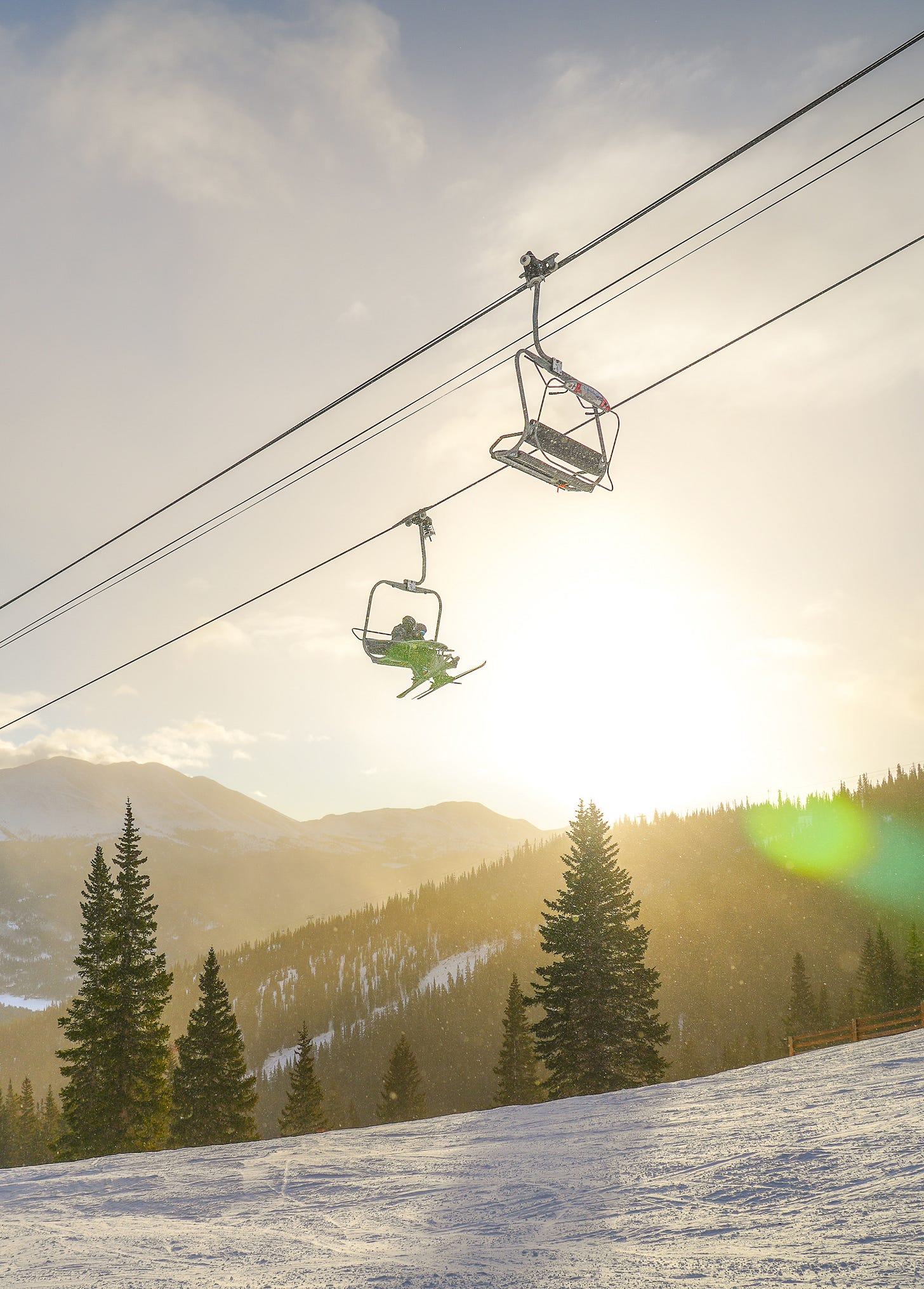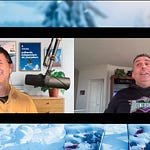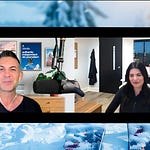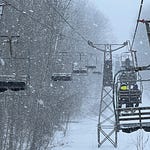Who
Jody Churich, Vice President and Chief Operating Officer of Breckenridge, Colorado
Recorded on
March 27, 2023
About Breckenridge
Click here for a mountain stats overview
Owned by: Vail Resorts
Located in: Breckenridge, Colorado
Year founded: 1961
Pass affiliations: Unlimited on Epic Pass, Epic Local Pass; limited access on Summit Value Pass (holiday blackouts), Keystone Plus Pass (unlimited access after April 1), Tahoe Local Pass (5 days shared with Vail, Beaver Creek, Keystone, Crested Butte, Park City)
Closest neighboring ski areas: Frisco Adventure Park (15 minutes), Copper Mountain (25 minutes), Keystone (25 minutes), Arapahoe Basin (30 minutes), Loveland (38 minutes), Ski Cooper (1 hour, 5 minutes) – travel times can vary considerably pending traffic and weather
Base elevation: 9,600 feet
Summit elevation: 12,998 feet
Vertical drop: 3,398 feet
Skiable Acres: 2,908
Average annual snowfall: 350 inches
Trail count: 187
Lift count: 35 (1 gondola, 5 six-packs, 7 high-speed quads, 1 triple, 6 doubles, 3 platters, 1 T-bar, 11 carpets) – Breckenridge plans to replace 5-Chair, a 1970 Riblet double, with a high-speed quad this summer.

Why I interviewed her
The audacity of it all. Many ski areas reach. Breck soars. Above the town, above the Pacific Ocean-sized parking lots, above the twisty-road condos and mansions, above the frantic base areas and trail-cut high-alpine - there lie the bowls, sweeping one after the next, southeast to northwest, across the range. Chairlifts, improbably, magnificently, will take you there. Or most of the way, at least. Kensho Superchair – a six-pack, rolls up to 12,302 feet, to the doorstep of Peak 6 – it’s a short hike to the tippy top, at 12,573 feet. But Kensho is holding Imperial Superchair’s beer, as that monster climbs to 12,840, just 158 feet shy of the 12,998-foot summit of Peak 8.
Why don’t they go all the way to the summit? Why do you think? Listen to the podcast to get the answer, or go there for yourself and see how those wild winds hit you at the top – or close enough to the top – of America.
The Brobots have plenty to say about Breck, Texas North, Intermediate Mountain. A-Basin is where the Summit County steeps live, don’t you know? There’s some truth to that, but it’s a narrative fed by bravado and outdated information. Breck’s high-alpine chairs – Imperial in 2005 and Kensho in 2013 – have trenched easy access to vast realms of gut-punching terrain. Beat your chest all you will – the only way out is straight down.
Breck is one of the most complete resorts in America, is my point here. And that didn’t happen by accident. Since Vail took ownership of the joint in 1997, the company has deliberately, steadily, almost constantly improved it. Sixteen new lifts, including the inbound 5-Chair upgrade (Breck will swap out a 53-year-old Riblet double for a new high-speed quad this summer); massive expansions onto Peaks 6 and 7; steady snowmaking and parking upgrades. If you want to understand Vail’s long-term intentions for its other 40 ski areas, look to the evolution of this, one of its original four resorts, over decades of always-better incremental upgrades.
Of course, plenty of people know that. Maybe too many. Breck is often – always? – America’s busiest resort by pure skier visits. It’s easy to access, easy to like, mostly – I said mostly Peak 10, E, 6 chairs – easy to ski if you stay below treeline. The town is the town, one of the great après hubs of North American skiing, thrumming, vibrant, a scene. Don’t go unless you want some company.
So what becomes of a place like Breck in a 21st century filled with existential questions about what lift-served skiing has become and what it is destined to be? How does a high-alpine but extremely accessible mountain adapt to its parent company’s insistence on dropping it onto the budget version of its ultra-affordable Epic Pass? Can the super-modern lifts that these pass sales fuel fix the liftlines that spoil the experience without overloading the trails in a way that spoils the experience? How can a town of 5,000 residents accommodate a daily influx of 17,000-ish skiers without compromising its bucolic essence that drew those visitors to begin with? And to what extent do even our highest ski areas need to fortify themselves against the worst outcomes of a changing climate with ever-more-aggressive snowmaking?
Every ski resort-blessed mountain town in the West is grappling with this same set of questions, but Breck, I-70 adjacent and Vail Resorts-bound, is perhaps the most high-profile among them. And where the town and the resort succeed or fail, they inform where our other icons will go. It’s a fascinating story, and we’re still in the book’s early chapters.

What we talked about
Unseasonable Colorado snow and cold; Breck’s strong 2022-23 ski season; how late the season could go and what could be available to ski; that California ski life; thoughts on Tahoe’s big season; Sierra-at-Tahoe’s fire recovery; Alpine Meadows in the pre-Powdr Corp ‘90s; why Alpine Meadows eventually dropped its snowboarding ban and what happened when it did; the early days of terrain parks; reaction when Powdr suddenly sold Alpine; how tiny Boreal and Soda Springs compete in a Tahoe market bursting with mega-resorts; the rise of Woodward; Vail’s ongoing efforts to promote women; leaving Powdr for Vail; Breck magic; four giant ski resorts, mere miles apart, but all distinct; the largest employee housing bed base in Vail Resorts portfolio; an assist with childcare; how a ski resort prepares for and responds to on-mountain fatalities; Breck’s “better not bigger” masterplan; nudging guests toward underutilized terrain; big plans for Peaks 8 and 9; upgrades on Freedom Superchair, Rip’s Ride, and 5-Chair; how a gondola could change Peak 9; a mid-mountain learning center; prioritizing upgrades for Peak 9’s 50-plus-year-old Riblet lifts; why Horseshoe T-bar is an unlikely candidate for an upgrade; why Kensho and Imperial Superchair don’t go to the very top of Breckenridge; the Peak 8 Super Connect chair detachment in December; how the resort determined that the chairlift was safe to run again; massive snowmaking upgrades and how these sync with Vail Resorts’ environmental goals; why Breck is only available on the top-tier Epic Day Pass, but is unlimited on the Epic Local Pass; and why Breck has remained on the Epic Local Pass.
Why I thought that now was a good time for this interview
Late last year, Breck updated its masterplan, as all ski areas operating on U.S. Forest Service land are obliged to do every decade (or so, as it actually ends up working out). Themed “bigger, not better,” the masterplan amounted to a modernization blueprint to maximize the resort’s existing footprint with modern lifts and selective trail- and glade-cutting:
Breckenridge’s goal is to tame its wild peaks. “The structuring vision for the next 10 years at [Breckenridge] is ‘Better not Bigger,’” the master plan states. Noting that the resort’s “significant congestion … can diminish the guest experience,” Breck says that its “goal is not to increase overall skier and rider visits on or around peak days, but rather to concentrate on improving the guest experience and better managing visitation.” To accomplish this, the resort hopes to both better move skiers out of its base areas with more and better lifts, and to keep many of them on the upper mountains with a combination of better chairs and a subtly re-imagined trail network.
Here’s the overview:
And a more granular look at what would and would not change in the mountain’s massive lift network:
The full article is worth a read, as I went peak-by-peak and broke down the proposed changes to each, including upgrades to the snowmaking footprint :
So, what better time to discuss America’s most vibrant ski resort than at the moment when the folks running it just outlined their vision for the far future? Breck will be an important test case of the extent to which a high-profile flagship can climate-proof and crowd-proof itself in an era of climate uncertainty and megapass maximalism. If Breck can thrive without breaking itself and everything around it – including the town at its base, the county it sits in, and the big road that leads up from the flats – then 21st century skiing will follow, adapt, adjust.
Questions I wish I’d asked
Churich and I briefly discussed a skier death at Breckenridge from a few weeks ago. Per the Aspen Times:
An Illinois man clearing snow from his chairlift seat with the safety restraint up fell out and died at Breckenridge Ski Resort a week ago, the local sheriff’s office reported.
John Perucco, 60, of Elgin, Illinois, was pronounced dead March 17 at St. Anthony’s Summit Hospital in Frisco after the fall, the Summit County Coroner’s Office said in an email. He was reportedly wearing a helmet when he fell from the lift.
He had not yet reached Tower 1 of Zendo Chair when he fell 25 feet and landed on a hard-packed, groomed trail below, according to the Summit County Sheriff’s Office. The department was reportedly notified around 11:20 a.m. of a death at the emergency room.
What I would have liked to explore a bit more was the issue of the raised safety bar. This is something I’ve thought a lot about lately. In New England and New York, all of the lifts have safety bars, and most skiers use them most of the time. Their use is required by law in several states, including Vermont, New York, and Massachusetts – patrollers and lift attendants often aggressively pressure skiers who don’t lower them. If you load a lift with strangers and you’re not prepared, you’re liable to be conked in the head by a down-coming bar – Easterners’ etiquette around this is abysmal, as it’s polite to at least call out, “coming down.”
In the Midwest and the West, bar use is much spottier. Forget the Midwest, where modern lifts are rare and most of the old ones have not been retrofit with bars. But skiing’s money is in the West, where most major lifts at most major resorts have been upgraded to detachables, which all have bars. I get a lot of passive-aggressive irritation when I lower the bar (with warning, of course), particularly in Utah and Colorado. This has always puzzled me. What’s the resistance? I’m aware of the NSAA research casting doubt on the efficacy of bar use – I’m skeptical, as there is no way to tell how many accidents have been prevented by a lowered bar.
Anyway, there is a cultural resistance to chairlift bar usage in the western United States that, as far as I can tell, is unique to the world’s major ski cultures. Vail, for its part, retrofits all of its inherited chairlifts with safety bars. So does Alterra. Vail requires its employees to use them at all times. Alterra allows each mountain to set its own policies (Palisades Tahoe and Solitude, for example, require bar use for employees).
I want to dig into this more, to understand both why this resistance exists and why it persists, despite the proliferation of modern chairlifts. It’s a bigger story than can be explored in a single anecdote, and hopefully it’s one I can write about more this offseason. Will this resistance fade, as once-ubiquitous helmet resistance has? Or is this skiing’s version of a cultural wedge issue, set to divide the tourists from the locals in an escalating game of Who Belongs Here?
What I got wrong
I said that 10 of Vail Resorts’ 41 ski areas were currently led by women. The correct number, at the time of recording, was nine out of 41. Here’s a complete list (several of Vail’s ski areas share a regional general manager: Boston Mills, Brandywine, and Alpine Valley in Ohio; Jack Frost and Big Boulder in Pennsylvania; and Seven Springs, Hidden Valley, and Laurel in Pennsylvania). With yesterday’s news that Beaver Creek COO Nadia Guerriero would move up to VP/COO of the Rockies Region (replacing Bill Rock, who was promoted to head of Vail’s Mountain Division), that number is now eight, I suppose. But who knows how Vail will stir up its mountain leadership team over the summer.
I also named off all the large ski areas around Lake Tahoe, to give context to Churich’s challenge running tiny Soda Springs and Boreal in that realm of monsters. The only thousand-plus-footer I missed in that riff is Homewood, but here’s a complete list of Tahoe-region ski areas. It really is amazing how these smaller spots exist (and seem to thrive), alongside some of the nation’s largest and most-developed resorts:
Churich and I also discussed what I referred to as “Vail’s new app” for the 2023-24 ski season. Its official name will be the My Epic app, and it should be a considerable upgrade from Epic Mix. The app will be your Epic Pass (no more RFID card unless you still want one), and will feature interactive trailmaps, real-time liftline wait times, operational updates, blackout date info on your pass, weather updates, resort charge, and more.
Why you should ski Breckenridge
Because you kind of have to. Trying to navigate life as a U.S. American skier without skiing Breck is kind of like trying to go through life without hearing a Taylor Swift song. It’s there whether you want it or not. Even if you’re in the habit of driving past to hit the Eagle County resorts, or you prefer A-Basin or Copper, or you avoid the I-70 corridor altogether, eventually your cousin or your boys from college or your aunt Phyllis is going to plan a spring break trip or a bachelor party or a family Christmas get-together at Breck, and you’re going to go.
And you’re going to like it. This is not the busiest ski area in America by accident. It’s a damn good ski mountain, even if it has more people and fewer steeps and less snow than some of its high-profile ski-biz peers. Yes, liftlines at Peaks 8 and 9 can test your patience at key times. And, yes, the intermediate superhighways can accumulate interstate-esque traffic. But it only takes a little creativity to find quiet glades off Peak 10 and 6-Chair and E-Chair, and tucked between the groomers off every other peak. As with any big western resort, you can follow the crowds or you can follow your skis. The kind of day you have once you stand up and push off the top of the lift is entirely up to you.
Podcast Notes
I’ve hosted several other Colorado-based Vail Resorts leaders on the podcast over the past year. While Bill Rock and Nadia Guerriero have recently moved positions, these conversations are largely still relevant:
The Storm publishes year-round, and guarantees 100 articles per year. This is article 32/100 in 2023, and number 418 since launching on Oct. 13, 2019. Want to send feedback? Reply to this email and I will answer (unless you sound insane, or, more likely, I just get busy). You can also email skiing@substack.com.



